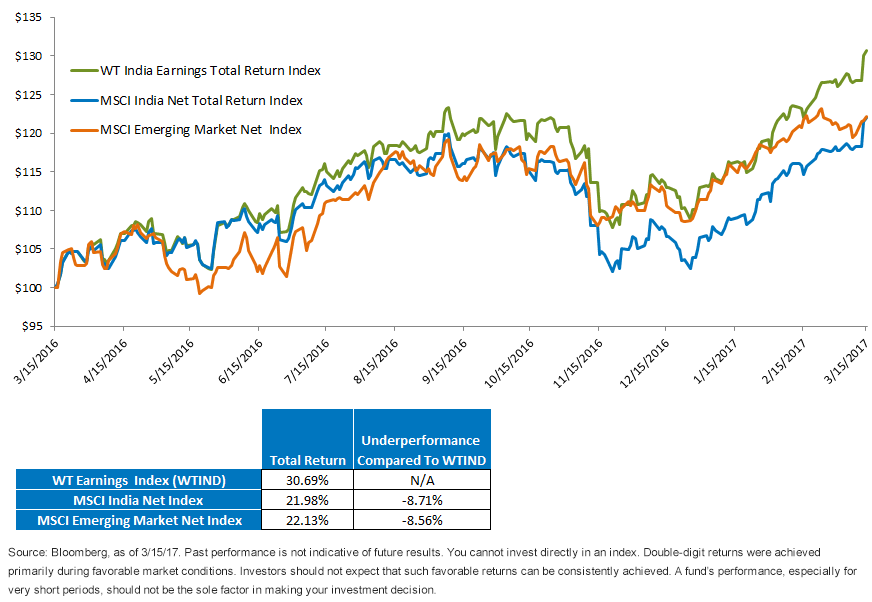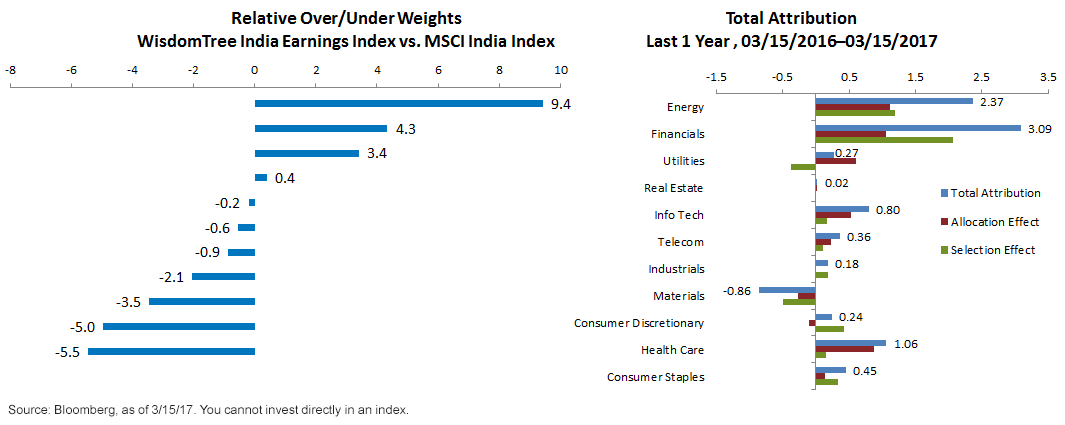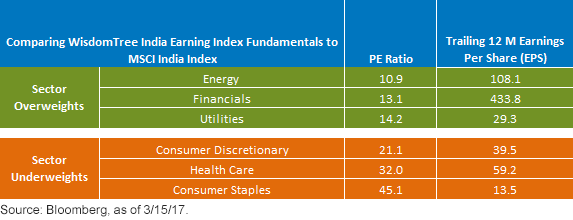Seeking Smarter Exposure To India’s Stock Market

There is little doubt in my mind that India is currently my favorite pick in emerging markets (EMs) for investors aiming for strategic growth. Driven by global “risk-on” and a host of local factors that I have covered in depth, the Indian equity markets have been doing very well for the last few months.
A more interesting question is this: What kind of exposure makes sense to allocate in the Indian equity landscape? The answer might be surprisingly simple for this large and fairly complicated economy: Stick to investing in fundamentals.
Let’s take a dive into two common approaches to accessing Indian stock markets: WisdomTree’s earnings-weighted “smart-beta” approach versus the MSCI market cap approach.
WisdomTree Earnings Methodology Racing Ahead of Cap Weighting
The chart below compares the performance of the WisdomTree India Earnings Index (WTIND) with that of the MSCI India Index (MXIN) over the last year—a period in which Indian markets performed well alongside the rest of EM. With total returns of 30.69%, the WisdomTree India Index outperformed the MSCI India Index by well over 800 basis points (bps). That is, simply put, massive!
Indian Equity vs. Emerging Markets Last 1 Year, 03/15/2016–03/15/2017
(Click on image to enlarge)
Reasons for Outperformance
The next question arises—what is driving this outperformance by WisdomTree’s India Index? The answer has two parts:
A. Methodology—Sector Allocation & Stock Selection
The first clue to this outperformance lies in WisdomTree’s sector over/under-weight and then its selection of companies within those sectors.
The left chart below shows WTIND’s relative over-weight in traditional sectors like Energy and Financials and its under-weight in the Consumer and Health Care sectors. The right chart shows how these sector bets helped or hurt the WisdomTree Index. The right chart is an attribution breaking down total outperformance (blue bar) into sector bets (red bars) and stock bets (green bar).
It is evident: Most of the outperformance comes from the Energy and Financial sectors—the top two relative over-weights in WTIND. What is even more interesting is if we break this total attribution (blue) into sector bet (red) versus stock bet (green), it becomes pretty obvious—not only did sector bets (i.e., over-weight to Energy/Financials and under-weight to Health Care) help, but stock bets within those sectors were the key drivers of overall outperformance by WTIND Index.
(Click on image to enlarge)
B.Investing 101—Invest in Profitable Companies and Be a Frugal Buyer
At a higher level, these sector and stock selections are driven by WTIND’s methodology, which selects only profitable companies and then weights them by their profits, or net income, to be precise.
Thus, an immediate outcome of this index methodology is that it more fundamentally emphasizes profits. In comparison, the MSCI India Index, which follows a market cap-weighted indexing process, selects and weights companies simply by their market cap size. Because WTIND weights by profits, the more profitable a company is, the greater its weight in the Index.
Finally, a disciplined approach implemented through an annual rebalance ensures a consistent applicability of this screen. Thus, if a company no longer remains profitable or its profits dwindle, no matter its size, it will be kicked out or reduced in weight.
The table below compares average price-to-earnings (P/E) ratio earnings per share (EPS) of the top three relative sectors’ over- and under-weights in WTIND, as of March 15, 2017. It is very clear that WisdomTree’s methodology and its disciplined implementation ensured over-weights in sectors that had lower valuations.
Conclusion
It is pretty clear that Indian markets have been doing well for some time, and EM investors could have potential upside by investing in India.
Disclosure: None.
Disclaimer: There are risks associated with investing, including possible loss of principal. Foreign investing involves special risks, such as risk of loss from ...
more





